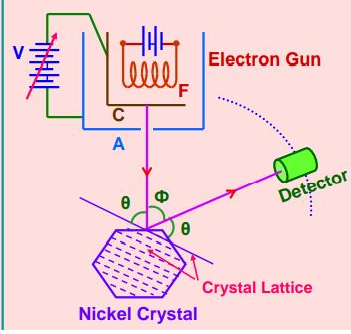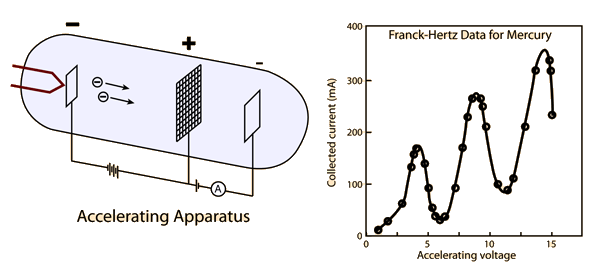JSS University Mysore 2025
NAAC A+ Accredited| Ranked #24 in University Category by NIRF | Applications open for multiple UG & PG Programs
Davisson-Germer Experiment is considered one of the most asked concept.
19 Questions around this concept.
Match List - I (Fundamental Experiment) with List - II (its conclusion) and select the correct option from the choices given below the list :

Which of the following statements is true regarding the Davisson-Germer experiment?
What was the experimental setup used in the Davisson-Germer experiment?
What is the significance of the Davisson-Germer experiment in the development of quantum mechanics?
What did the de Broglie equation relate to in the Davisson-Germer experiment?
In the Davisson-Germer experiment, electrons were fired at a crystal of nickel. What was the purpose of using a crystal?
Assertion: Davisson-Germer's experiment established the wave nature of electrons.
Reason: If electrons have a wave nature, they can interfere and show diffraction.
NAAC A+ Accredited| Ranked #24 in University Category by NIRF | Applications open for multiple UG & PG Programs
According to Bragg's formula, what is the path difference between electrons scattered from adjacent crystal planes?
Davisson and Germer Experiment, for the first time, proved the wave nature of electrons through electron diffraction and also verified the de Broglie equation.
In this experiment, we will study the scattering of electrons by a Ni crystal.

The experimental setup for the Davisson and Germer experiment is enclosed within a vacuum chamber.
The experimental arrangement of the Davisson Germer experiment consists of the following main parts
Observations of Davisson Germer experiment-
These electrons formed a diffraction pattern. Thus the dual nature of matter was verified.
Note-Intensity of a scattered beam of electrons is found to be maximum when the angle of scattering is and the accelerating potential is 54 V.
i.e we could see a strong peak in the intensity. This peak was the result of the constructive interference of the scattered electrons.
The intensity of the scattered electrons is not continuous. It shows a maximum and a minimum value corresponding to the maxima and the minima of a diffraction pattern produced by X-rays.
Galvanometer in Davisson Germer Experiment-
The detector is connected to a sensitive galvanometer to measure the small values of current due to scattered beam of electrons.
The path difference between electrons scattered from adjacent crystal planes is given by
and For constructive interference between the two scattered beams
where
and is the angle between the incident rays and the surface of the crystal

For the above figure
As
So
As Intensity of a scattered beam of electrons is found to be maximum when the angle of scattering is
So For we get
we get
Co-relating Davisson Germer experiment and de Broglie relation-
According to de Broglie,
and using V = 54 Volt we get
From Bragg’s formula we have
The Lattice Spacing in Ni Crystal is given as d=0.092 nm.
And using
we get
Therefore the experimental results are in a close agreement with the theoretical values got from the de Broglie equation.
Thus Davisson and Germer Experiment verify the de Broglie equation.
Frank Hertz Experiment-
This experiment is the first experimental verification of the existence of discrete energy states in atoms.
For this experiment, the graph of Collected current Vs Accelerating Voltage is given below

Frank and Hertz had proposed that the 4.9 V characteristic of their experiments was due to the ionization of mercury atoms by collisions with the flying electrons emitted at the cathode.
"Stay in the loop. Receive exam news, study resources, and expert advice!"
